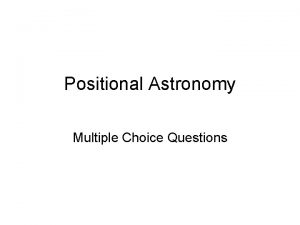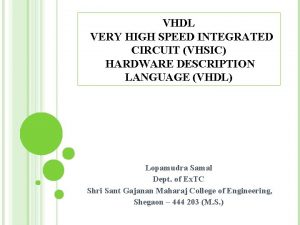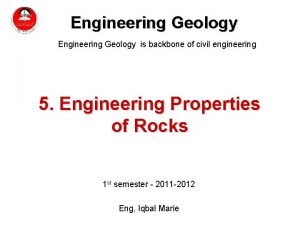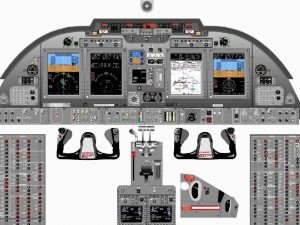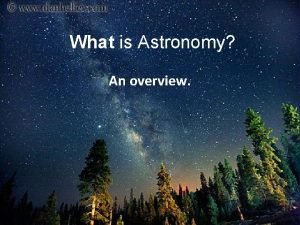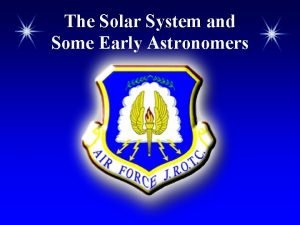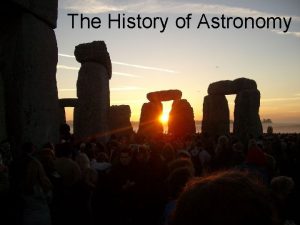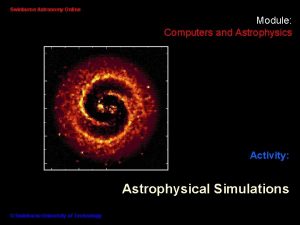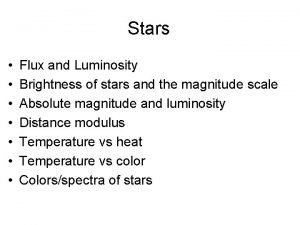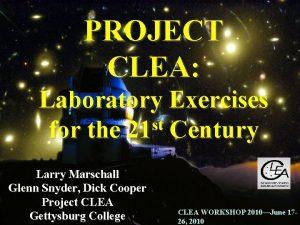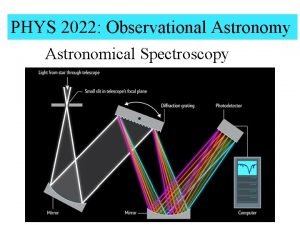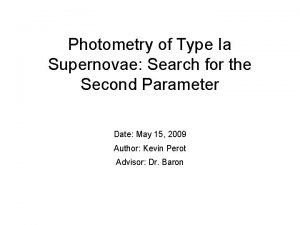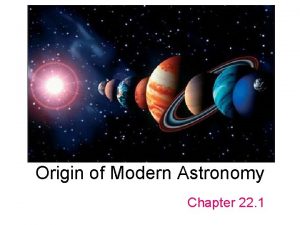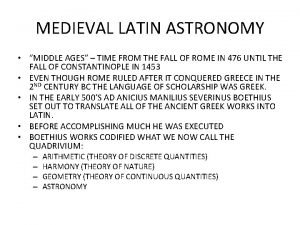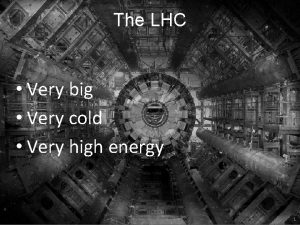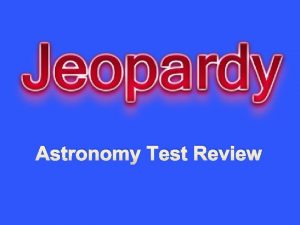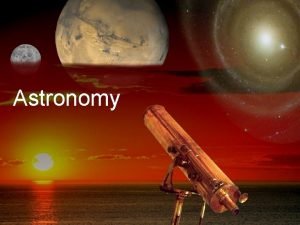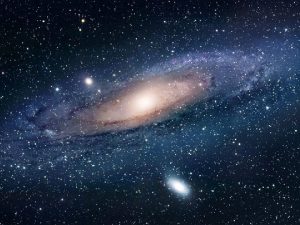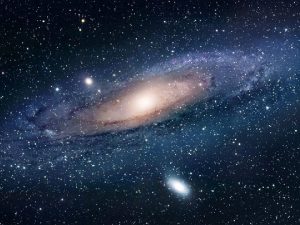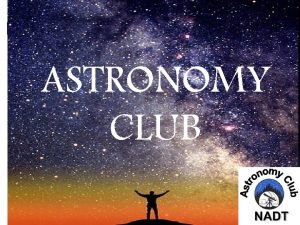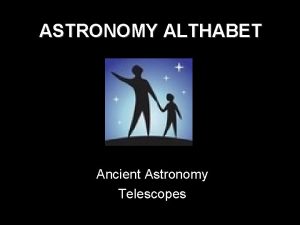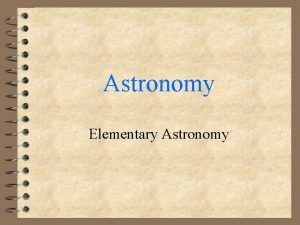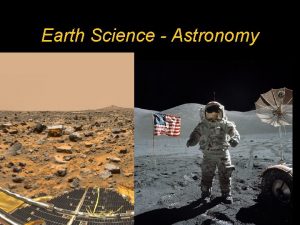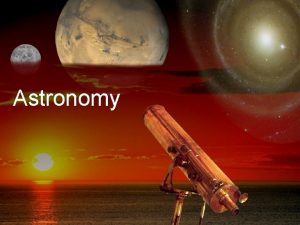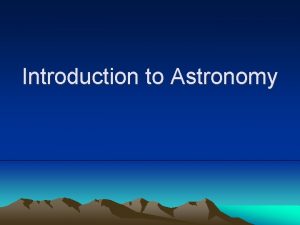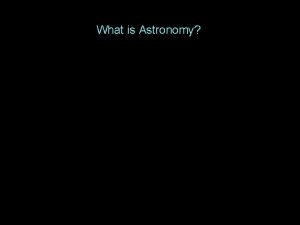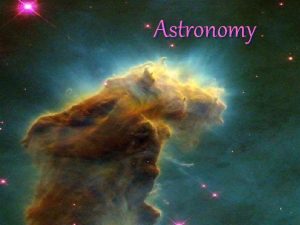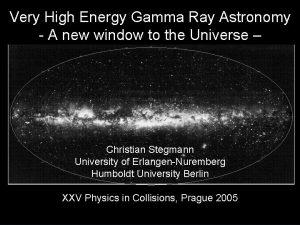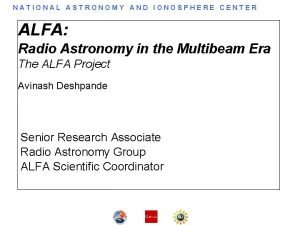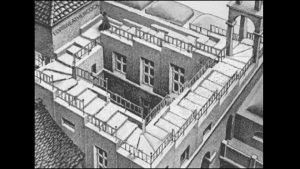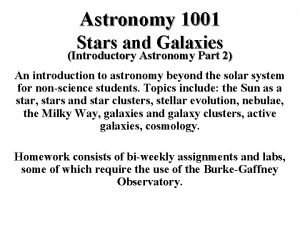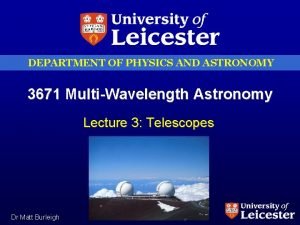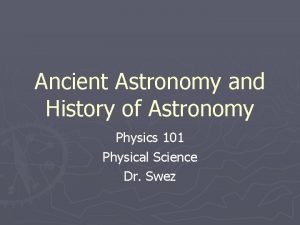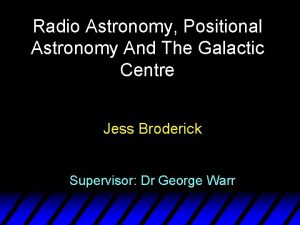High Energy and Very High Energy astronomy JF



























- Slides: 27

High Energy and Very High Energy astronomy J-F. Glicenstein IRFU/SPP, CEA-Saclay

Outline − present and future high energy instruments − present and future very high energy instruments − physics with HE and VHE g ray detectors − cosmic ray acceleration − fundamental tests − dark matter indirect searches − cosmology P 2 IO scientific council High and Very High Energy Astronomy 2

High Energy g ray astronomy: present − collaboration to Fermi-LAT − international team, > 400 scientists − satellite-based Cs. I(Tl) calorimeter − 30 Me. V < E < 300 Ge. V − major competitor: AGILE − launched 08/2008 − Fermi-LAT @ Paris-Saclay: LLR: 5 physicists (IRFU: 4 physicists) Wednesday, June 27 th 2012 High and Very High Energy Astronomy 3

HE gamma ray astronomy: catalog of sources − 2 FGL catalogue published in 2012 − 1873 sources, mostly pulsars/PWN/SNR (~100), AGNs (~1000) − 575 unidentified sources P 2 IO scientific council High and Very High Energy Astronomy 4

Designing and testing the LAT calorimeter IRFU/LLR collaboration on the design and tests of the LAT calorimeter (“environmental tests”, response). (NIMA, 2004) P 2 IO scientific council High and Very High Energy Astronomy 5

HE g ray astronomy: after Fermi-LAT − HARPO project − High pressure TPC − High angular resolution+ polarimetry − 1 Me. V < E < 1 Ge. V − validation with polarized photons (SPring 8, Japan) − LLR/IRFU collaboration P 2 IO scientific council High and Very High Energy Astronomy 6

VHE g ray astronomy: present − participation to H. E. S. S − international team, ~ 130 members − 4+1 IACT (Cherenkov) array in Namibia − 50 Ge. V < E < 50 Te. V − major competitors: MAGIC, VERITAS − data taking started 2003 − HESSS @ Paris-Saclay: LLR: 10 physicists/engineers IRFU: 9 physicists/engineers Wednesday, June 27 th 2012 High and Very High Energy Astronomy 7

VHE gamma-ray astronomy: catalog of sources The VHE gamma-ray sky (November 2011) http: //www. mppmu. mpg. de/~rwagner/sources/ ~100 sources (60 galactic) P 2 IO scientific council High and Very High Energy gamma ray astronomy 8

Study of the 2 FGL unidentified sources − 2 FGL unidentified sources list could be searched as dark matter clump candidates or “dark accelerators” − H. E. S. S. 2 can provide a very large exposure on these sources and could help associating them to known objects − Opportunity of a Fermi (LLR)/HESS (IRFU) collaboration Proposal submitted to P 2 IO: “Unidentified high energy Fermi sources and HESS 2: dark matter or dark accelerator? ” P 2 IO scientific council High and Very High Energy Astronomy 9

Technical activities on HESS 2 − mechanical design of the HESS/HESS 2 camera by the LLR − contribution of the IRFU to the FE electronics of the camera (SAM chip) − IRFU/LLR collaboration of the Level 2 trigger board Front of the HESS 2 camera P 2 IO scientific council Level 2 trigger board of HESS 2 High and Very High Energy Astronomy 10

The next generation of IACTs: CTA (2015) 2 arrays: north+south all-sky coverage low energy section Ethresh ~ 10 Ge. V 4 ø=23 m telescopes P 2 IO scientific council core array 100 Ge. V-10 Te. V 23 ø=12 m telescopes high energy section 32 ø=5 -6 m tel. on 10 km 2 area High and Very High Energy gamma ray astronomy 11

Sensitivity of CTA energy range increase x 10 flux sensitivity gain Flux sensitivity for a 50 h observation P 2 IO scientific council High and Very High Energy gamma ray astronomy 12

Cherenkov Telescope Array NECTAr module (IRFU/LPNHE/LUPM/Barcelona) − Very large international project (> 1000 members, 27 countries) − Large french involvement (~ 35 FTE) − CTA@Paris-Saclay: IRFU: ~20 physicists/engineers LLR: ~10 physicists/engineers NECTAr. Cam camera − Technical involvement: -IRFU: NECTAr project (camera modules) mirrors, MST telescope design, site. . -LLR: MST camera, . . -IRFU/LLR collaboration on the NECTAr. Cam camera project P 2 IO scientific council High and Very High Energy Astronomy 13

14

Physics with the HE/VHE photons Cosmic ray acceleration Black holes − « Symétries dans le monde subatomique » Lorentz invariance « Composants sombres de l'Univers » − Indirect searches for dark matter − Searches for exotic particles and objects (axions, primordial black holes) − Cosmology: • compact objects, gravitational lenses. . • extragalactic background light P 2 IO scientific council High and Very High Energy Astronomy 15

Understanding the origin of UHE cosmic rays −Excess UHE cosmic rays seen around − − − Auger Cen A radiogalaxy by AUGER possible source: lobes of Cen A multiwavelength observation with HESS, Fermi Exemple of a possible collaboration between AUGER (IPN), HESS and Fermi (LLR, IRFU) Fermi P 2 IO scientific council High and Very High Energy Astronomy 16

Tests of Lorentz invariance − Tests of the energy dependence of the photon velocity (expected in some quantum gravity theories) Parametrization: (with M 1, 2 ~ Mplanck ) − One expects an energy dependent arrival time of photons (simultaneous emission asumed). − Sensitivity to M 1 (M 2): −AGN with Cerenkov telescopes, z~0. 1, D t ~ 1 mn, E~1 Te. V, − GRB with Fermi, z ~ 1, D t ~ 1 s, E~30 Ge. V, P 2 IO scientific council M 1~1018 Ge. V M 1~1019 Ge. V High and Very High Energy Astronomy 17

Lorentz invariance tests in practice AGN PKS 2155 -304 M 1 > 2. 1 1018 Ge. V (HESS) Observation of GRB (Fermi), M 1 > 1. 4 1019 Ge. V Wednesday, June 27 th 2012 High and Very High Energy Astronomy 18

Indirect DM searches with IACTs WIMP annihilation flux into g rays observed by an IACT: particle model f. AP: dark halo model − Most current particle models: − neutralinos (MSSM) − U Extra Dimensions (Servant, Tait 2003) boson B − leptophilic models (PAMELA excess) − decaying dark matter − Astrophysical factor: dense targets Galactic Center nearby dwarf galaxies, globular clusters galaxy clusters (Fornax) dark matter clumps P 2 IO scientific council High and Very High Energy gamma ray astronomy 19

H. E. S. S. results on Fornax cluster: WIMPs exclusion A. Abramovski et al. (HESS collaboration), Ap. J 2012 P 2 IO scientific council High and Very High Energy gamma ray astronomy 20

H. E. S. S. results on Fornax cluster with boosts Excluded 95% CL P 2 IO scientific council High and Very High Energy gamma ray astronomy 21

Expected <sv> limits with clumps and CTA (1/4 sky) ― 1/4 survey in ~ 370 hours ― assume 5 10 -13 cm-2 s-1 sensitivity (5 hour/bin) ― number of subhalos: 3907± 324 ― thermal WIMPs region reachable P. Brun, E. Moulin, J. Diemand, J-F. G, PRD 83, 015003 (2011) P 2 IO scientific council High and Very High Energy gamma ray astronomy 22

Cosmic signatures of axion-like particles − Cosmic magnetic fields affect the propagation of high energy photons if coupled to hypothetic axions. − Signature of axion-photon coupling: “rugged” spectra (Wouters and Brun 2012) − might provide a hint or a constraint on axions if the cosmic magnetic field is modeled properly. P 2 IO scientific council High and Very High Energy Astronomy 23

Cosmology with gravitational lensing Hubble constant from macrolensing time delays −First gravitational lens system (PKS 1830) seen with Fermi-LAT (A. Barnacka et al, Ap. J 2011) − improvement of time delay due to the large time coverage of Fermi − improvement in measurement of H 0 from lenses. Density of very low mass compact objects (PBHs) from femtolensing (A. Barnacka et al, 2012, PRD sub. ) − large number of GRB detected by Fermi-GBM − improved spectral reconstruction Excluded 95% CL Simulated femtolensed GRB P 2 IO scientific council density of compact objects High and Very High Energy Astronomy 24

Cosmology: Extragalactic background light P 2 IO scientific council High and Very High Energy Astronomy 25

The EBL “crisis” Upper limits from Te. V blazars predictions Meyer et al (2012) − predictions from IR light close to UL from TEV blazars Universe seems more transparent to Te. V g than previously thought − “conventional” explanation: population evolution in galaxies − other more exotic explanation: Lorentz invariance violation, axions-g oscillation P 2 IO scientific council High and Very High Energy Astronomy 26

Conclusion and outlook − Labs from the Paris-Saclay campus, mostly IRFU and LLR have been involved in HE/VHE astronomy for 25 years, successfully collaborating −in projects such as Fermi-LAT, HESS and CTA. − The main physics goals are the study of cosmic ray acceleration and black holes. − Some physics goals of HE/VHE astronomy are contained in 2 of the scientific themes of P 2 IO: −fundamental tests (Lorentz invariance) −dark components of the Universe (Dark Matter, axions, cosmology) − Strong collaborations can be easily reinforced between IRFU and LLR with subjects such as the study of unidentified objects from HE catalogs − Collaborations with other teams from the Paris-Saclay campus could be developed on themes such as the study of UHE cosmic rays. P 2 IO scientific council High and Very High Energy Astronomy 27
 Learning astronomy by doing astronomy activity 1 answers
Learning astronomy by doing astronomy activity 1 answers Learning astronomy by doing astronomy answers
Learning astronomy by doing astronomy answers Learning astronomy by doing astronomy
Learning astronomy by doing astronomy Very bad to very good scale
Very bad to very good scale Scientific notation rules
Scientific notation rules There is very few soup in the bowl
There is very few soup in the bowl Receiving table/area
Receiving table/area Very little food
Very little food High point astronomy
High point astronomy Astronomy questions and answers multiple choice
Astronomy questions and answers multiple choice Msu physics and astronomy
Msu physics and astronomy Vhsic
Vhsic Low mass star life cycle
Low mass star life cycle Which rock possesses very high compressive strength?
Which rock possesses very high compressive strength? Vortac range
Vortac range Energy energy transfer and general energy analysis
Energy energy transfer and general energy analysis Energy energy transfer and general energy analysis
Energy energy transfer and general energy analysis What is astronomy
What is astronomy Claudius ptolemy astronomy contributions
Claudius ptolemy astronomy contributions Astronomy greek roots
Astronomy greek roots Swinburne astronomy
Swinburne astronomy Astronomy
Astronomy The spectral sequence sorts stars according to
The spectral sequence sorts stars according to Vireo astronomy
Vireo astronomy Astronomy
Astronomy Distance ladder astronomy
Distance ladder astronomy Origin of modern astronomy
Origin of modern astronomy Astronomy in the middle ages
Astronomy in the middle ages









